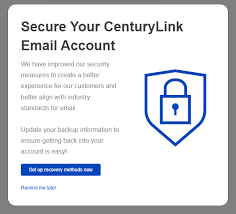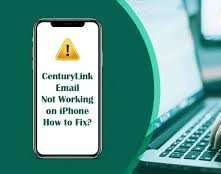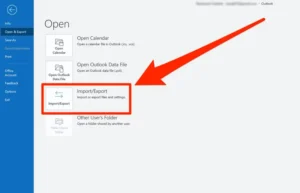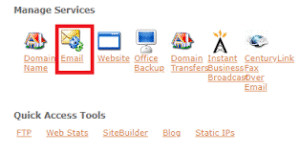When email stops working, frustration rises quickly. For CenturyLink users, outages can interrupt business, delay communication, and disrupt routines. In a digital world where connectivity drives productivity, an email outage feels like everything comes to a halt. Still, while waiting for services to return, there are practical ways to manage the downtime, keep communication flowing, and reduce stress.
Understanding a CenturyLink Email Outage
Email outages happen for several reasons. CenturyLink servers can experience maintenance, security threats, or unexpected overload. Sometimes the issue traces back to local equipment, such as modems or routers. In rare situations, outages extend across entire regions, impacting thousands of users at once.
Although sudden service interruptions cause concern, most outages resolve within a reasonable time. CenturyLink typically deploys technical teams quickly, restoring access as soon as possible. Still, understanding what happens behind the scenes provides reassurance. Outages rarely signal data loss. Instead, they often involve server congestion, temporary misconfigurations, or protective actions taken during suspicious activity.
First Steps When Email Goes Down
When CenturyLink email becomes inaccessible, it helps to confirm the issue before assuming the worst. Start by checking whether the outage is widespread or isolated. Outage detection websites, official CenturyLink support pages, and community forums provide live updates. If multiple users report issues, then waiting becomes the only practical option.
If the problem seems isolated, restarting the modem, clearing the browser cache, or testing email on another device often solves the issue. Verifying login credentials also prevents wasted time. Many outages stem from expired passwords or incorrect account settings.
Read Also: How to Check if CenturyLink Email is Down Today
Managing Communication During Downtime
Business professionals, students, and remote workers cannot afford silence during downtime. Alternatives allow communication to continue smoothly. Temporary reliance on free services such as Gmail, Yahoo Mail, or Outlook keeps essential messages moving. Setting up an automatic response, once access returns, helps contacts understand delays.
For work situations, instant messaging platforms like Slack, Microsoft Teams, or Zoom chat offer immediate alternatives. Even social media platforms play a role in bridging gaps. Quick updates via LinkedIn or Twitter maintain visibility until email resumes.
Protecting Productivity While Waiting
An outage often triggers impatience, but reframing the situation can create opportunities. Without constant inbox notifications, the chance arises to focus on tasks requiring deep concentration. Projects left untouched due to constant email interruptions finally receive attention. Offline tasks such as organizing files, drafting reports, or brainstorming strategies become easier.
Downtime also serves as an ideal moment to evaluate digital habits. Email dependence often grows unnoticed until outages highlight it. Exploring task management software, cloud storage systems, or automation tools reduces future vulnerability. A diversified digital ecosystem ensures communication continues even when one service falters.
Checking Security During an Outage
Users often worry about data security when outages strike. In most cases, outages do not equal breaches. Still, caution never hurts. Monitoring financial accounts, reviewing login attempts, and enabling two-factor authentication provide peace of mind. Once service returns, changing passwords ensures account integrity.
Outages also remind users of the value of regular backups. Storing important emails offline or forwarding critical correspondence to secondary accounts reduces risk. While CenturyLink maintains strong security protocols, personal responsibility adds an extra layer of safety.
Staying Informed on Restoration Progress
Uncertainty intensifies frustration. CenturyLink usually posts updates through official social channels, status dashboards, or customer support lines. Subscribing to notifications allows users to track restoration timelines without repeatedly checking.
Community forums and technology news outlets also provide context. Shared experiences confirm whether problems persist and highlight possible workarounds. Knowing others face the same challenge reduces anxiety and strengthens patience.
Preparing for Future Outages
Experiencing one outage often motivates preparation for the next. Simple measures reduce disruption significantly. Keeping a secondary email account ensures continuity. Storing contact information outside email prevents access problems. Creating an outage checklist with steps like checking status pages, testing devices, and shifting to alternatives helps reduce stress during unexpected downtime.
Organizations benefit from broader contingency planning. Encouraging employees to adopt backup communication channels ensures business continuity. Training teams on tools beyond email, such as shared workspaces or project management apps, minimizes productivity loss.
Balancing Patience with Proactivity
Frustration during downtime is natural, but focusing only on lost access prolongs stress. Balancing patience with proactive measures creates control. Instead of refreshing the inbox repeatedly, redirecting energy toward meaningful work, security checks, or future preparation transforms the outage into a learning experience.
Outages remain an inevitable part of technology. Internet infrastructure, while powerful, cannot guarantee absolute uptime. CenturyLink, like all providers, invests heavily in stability but cannot eliminate rare disruptions. Users who adopt flexible approaches, however, adapt far more smoothly than those who rely on a single point of failure.
Conclusion
CenturyLink email outages create temporary inconvenience, but solutions exist. Verifying the outage, seeking alternatives, protecting productivity, and preparing for the future help reduce frustration. Viewing the downtime as an opportunity rather than a setback fosters resilience.
When the service eventually returns, users gain not only restored access but also a stronger digital strategy. Communication thrives best with adaptability. While waiting, calm persistence paired with proactive choices ensures that an outage never completely halts progress.
FAQs
Why is my CenturyLink email not working?
It may be a server outage, maintenance issue, or local device problem.
How long do CenturyLink email outages last?
Most outages resolve within hours, but duration depends on the cause.
Can I lose emails during a CenturyLink outage?
Emails are usually stored safely and appear once service restores.
What should I do while waiting for email service?
Use alternate email accounts, messaging apps, and focus on offline tasks.
How can I prepare for future outages?
Keep a backup email, store contacts offline, and set up secondary tools.




